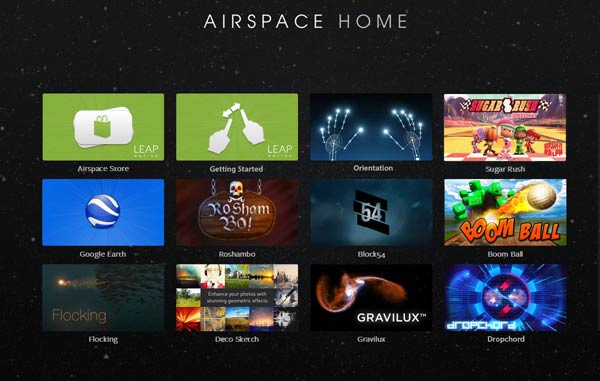The highly anticipated new Leap Motion controller started shipping late past week and we already have a batch of early reviews to look at. The reviewers have not had that much time to play around with the device but initial impressions across multiple reviews are quite clear; this is an interesting glimpse into the future of computer control but isn't really delivering on its promise, as yet.

Engadget "spent several days" with the Leap Motion controller. The reviewer used the device on both Mac and PC. These platforms have 58 and 54 applications available for them on the Airspace software store respectively. Windows has nine exclusive apps and the Mac has fourteen.

Things didn't start off so well, as the bundled Orientation app - meant to make users familiar with the gesture controls and area of sensitivity, was glitchy and "even slow, deliberate attempts to rotate our hands from palm up to palm down caused numerous detection failures". However moving onto working in some of the Airspace apps, particularly in games which were also touchscreen favourites, "the Leap performed admirably". Other more innovative games were hit and miss.
Another major software focus for the Airspace Store is in music making. The software designed for this purpose worked pretty well overall. The last major category or apps is educational, where users can, for example, dissect a frog or explore the universe and from the planetary systems, down to molecules in 3D.
On the Windows 8 Modern UI the potential of the Leap Motion to bring touchscreen fluidity and controls to non-touch desktop users didn't pan out. This realisation, despite some efforts, "was a huge blow to the daily usability of the Leap Motion controller".
In its conclusion Engadget said that the Leap Motion controller was "best suited for creative pursuits, not productivity", also the "initial software library for Leap is relatively limited", and finally "think of it as an entertainment expense, not a business one".

GigaOM had a play with their Leap in a much shorter hands-on test but came to a similar conclusion; that it felt a bit like a sometimes frustrating gimmick but it may grow into something amazing.

The last review I read, at MIT Technology Review warns readers to Look before you Leap Motion. Again this reviewer had been "pretty excited" about the Leap and its potential but after a good length of hands-on time feels crestfallen about the device. "Generally, though, it felt like I could never quite get the controls to work as deliberately as I wanted", wrote the author. Another thing the MIT reviewer noticed was her arm got very tired from using the controller.
Have any readers received their Leap Motion controllers yet?














